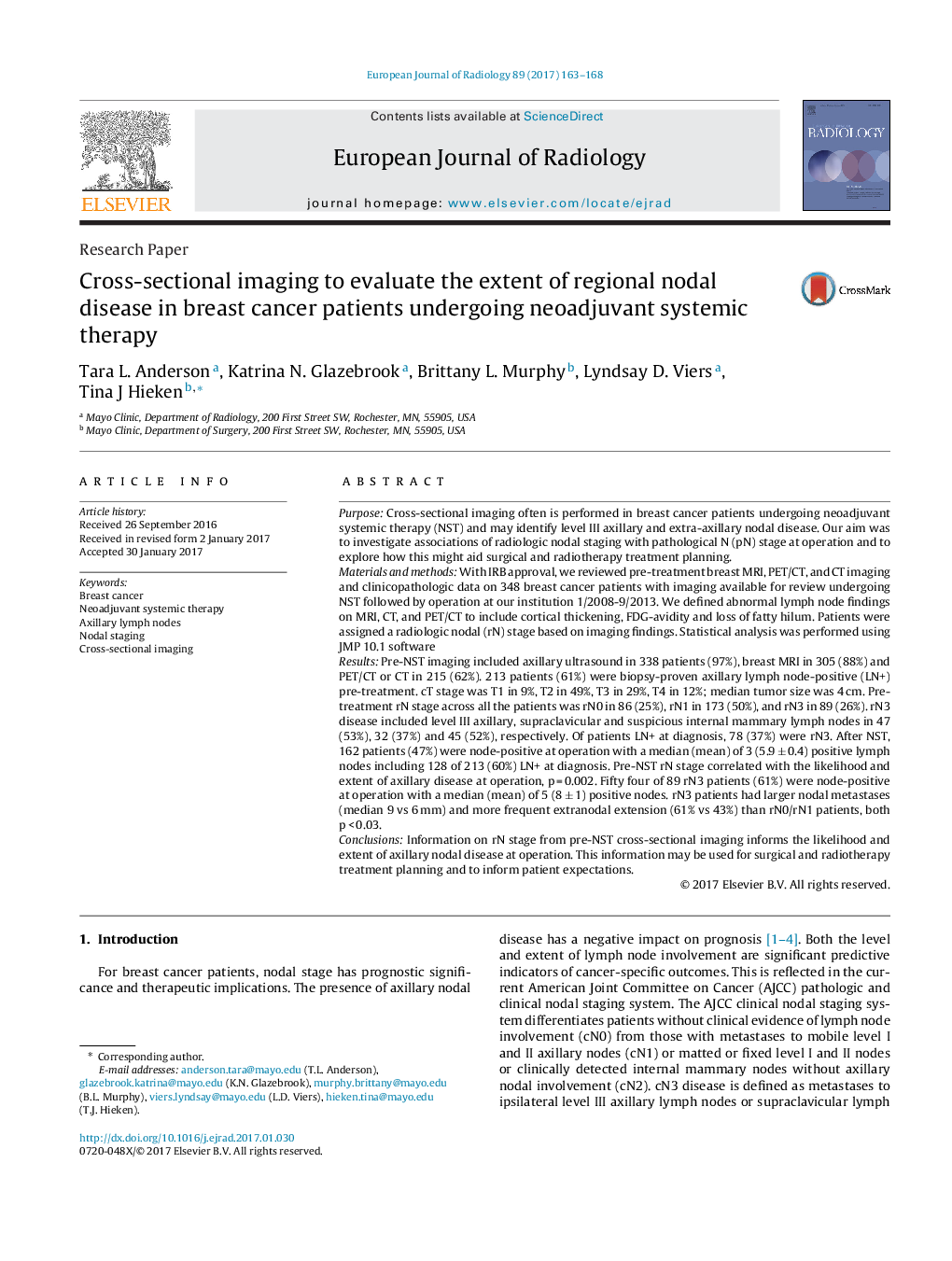| کد مقاله | کد نشریه | سال انتشار | مقاله انگلیسی | نسخه تمام متن |
|---|---|---|---|---|
| 5726370 | 1609731 | 2017 | 6 صفحه PDF | دانلود رایگان |

PurposeCross-sectional imaging often is performed in breast cancer patients undergoing neoadjuvant systemic therapy (NST) and may identify level III axillary and extra-axillary nodal disease. Our aim was to investigate associations of radiologic nodal staging with pathological N (pN) stage at operation and to explore how this might aid surgical and radiotherapy treatment planning.Materials and methodsWith IRB approval, we reviewed pre-treatment breast MRI, PET/CT, and CT imaging and clinicopathologic data on 348 breast cancer patients with imaging available for review undergoing NST followed by operation at our institution 1/2008-9/2013. We defined abnormal lymph node findings on MRI, CT, and PET/CT to include cortical thickening, FDG-avidity and loss of fatty hilum. Patients were assigned a radiologic nodal (rN) stage based on imaging findings. Statistical analysis was performed using JMP 10.1 softwareResultsPre-NST imaging included axillary ultrasound in 338 patients (97%), breast MRI in 305 (88%) and PET/CT or CT in 215 (62%). 213 patients (61%) were biopsy-proven axillary lymph node-positive (LN+) pre-treatment. cT stage was T1 in 9%, T2 in 49%, T3 in 29%, T4 in 12%; median tumor size was 4 cm. Pre-treatment rN stage across all the patients was rN0 in 86 (25%), rN1 in 173 (50%), and rN3 in 89 (26%). rN3 disease included level III axillary, supraclavicular and suspicious internal mammary lymph nodes in 47 (53%), 32 (37%) and 45 (52%), respectively. Of patients LN+ at diagnosis, 78 (37%) were rN3. After NST, 162 patients (47%) were node-positive at operation with a median (mean) of 3 (5.9 ± 0.4) positive lymph nodes including 128 of 213 (60%) LN+ at diagnosis. Pre-NST rN stage correlated with the likelihood and extent of axillary disease at operation, p = 0.002. Fifty four of 89 rN3 patients (61%) were node-positive at operation with a median (mean) of 5 (8 ± 1) positive nodes. rN3 patients had larger nodal metastases (median 9 vs 6 mm) and more frequent extranodal extension (61% vs 43%) than rN0/rN1 patients, both p < 0.03.ConclusionsInformation on rN stage from pre-NST cross-sectional imaging informs the likelihood and extent of axillary nodal disease at operation. This information may be used for surgical and radiotherapy treatment planning and to inform patient expectations.
Journal: European Journal of Radiology - Volume 89, April 2017, Pages 163-168